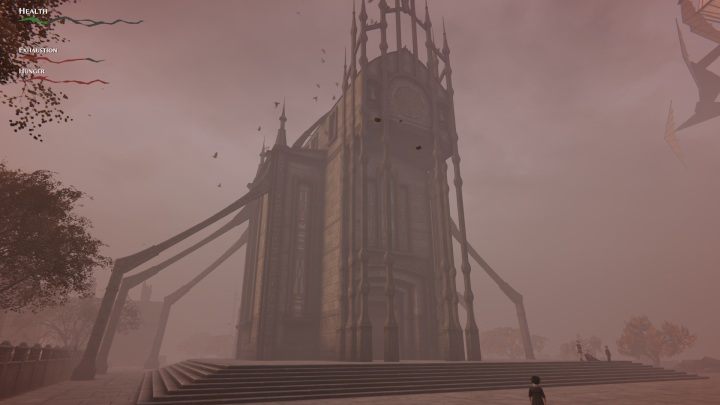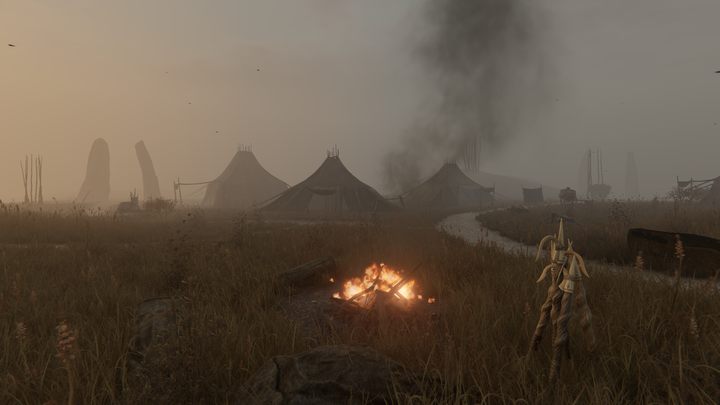Every time you die, the game gets harder. More Difficult With Each Death – How Pathologic 2 Toys with our Gaming Habits

- More Difficult With Each Death – How Pathologic 2 Toys with our Gaming Habits
- Every time you die, the game gets harder
Every time you die, the game gets harder
This might seem a fun concept, but the game quickly erases any trace of a smile from your face. With every death, we not only have to return to the previous save (and you can't quick-save anywhere you want); you also lose something every time. Sometimes a minor thing, like being able to hug a childhood friend. More often – a maximal level of your survival stats becomes reduced. Usually, it’s hunger.
IS PATHOLOGIC 2 A SEQUEL, OR A REMAKE?
Yes :)
It's both, actually. Although the setting, characters and plot outline are identical as in Pathologic from 2005, the story takes a slightly different turn, the characters are more detailed, some mechanics were removed, and others were introduced. At the same time, the game recognizes the existence of the predecessor and refers to it in several places (for example mentioning the really bad English localization). However, being familiar with the first game isn't required to grasp what's going on in Pathologic 2.

In Pathologic, we gradually give up far-reaching plans and heroic aspirations. Maybe you thought that you'll be able to defeat the plague and save everyone if you do everything right. But the game quickly dispels that illusion, forces you to verify your priorities, figure out just how much you can handle, and once you start feeling comfortable, it turns everything upside down. No matter how cautious you are, sooner or later, you'll make a mistake.
At the same time, Pathologic wants you to take the defeats on the chin. Of course, you can approach the same fight fifteen times, like a fly hitting a window glass, in hope that you'll finally manage to perfectly time all the parries and counters, but letting go is the better idea. This is a story of a calamity. Fortune favors no one, including the protagonist. What ultimately matters isn't whether you pursue success with the obstinacy of an atomic ice-breaker on the Barents Sea, tackling every challenge the fate throws at you, but rather whether you can take the defeat and keep on going. There's a profound truth in this. And it makes the experience all the more rewarding.
WAIT A SECOND, WHAT PROPHET?!
Pathologic 2 is odd, and it exhibits this oddity from the first moments of gameplay, rendering it one of the game's greatest advantages. Although, theoretically, the setting is reminiscent of a remote Soviet province of the early XX century, many elements are anachronistic, or straight-up supernatural. We have oil lamps and boys in flat caps, but there's also a giant construction towering over the city, defying the laws of physics, we engage in lengthy conversations with the plague, and one of the most important figures of the story turns out a wanderer, who rose from his grave and runs at night shop, where he buys up dead objects.

Back to treating games like logical puzzles: Pathologic 2 tries to wean us from thinking like a machine – clicking on everything that can be clicked on, and such. We're accustomed to thinking that if something can be opened or collected, it will certainly facilitate completing the game in the best possible way. Pathologic 2 does not treat the player as an interface operator, does not present a moral dilemma in the form of a dialog box, where you choose between confirmation and denial. Instead, it requires action or lack of it – not doing something is also an option. There actually is a separate ending for those players, who decide to refrain from acting in key moments of the game.
It's not a pleasant game This is not a game for everyone, but if you can embrace its unique, odd atmosphere, if you accept the terms it offers, you will find an experience like none other. Pathologic 2 is irritating and irksome, it crawls under your skin and doesn't let you forget.
At first I thought I'd just save everyone and ride into the sunset. Then I just wanted to save my loved ones. After twelve days (and thirty hours), I managed to save seven children and an invisible cat. It was worth it.

BUT IT'S REALLY TOO HARD
At the request of the players – and perhaps in the wake of a broad discussion about the complexity of the game as a whole – the developers decided to give us the opportunity to make things simpler. Instead of the traditional easy mode, we got a series of precisely described sliders that let us modify various aspects of the game: from damage resistance to weapon wear rate. All provided with comments on how this indicator affects the gameplay. For those who have completed Pathologic 2 without any relief of this sort, a special achievement is waiting, which I shall boast with right now.
